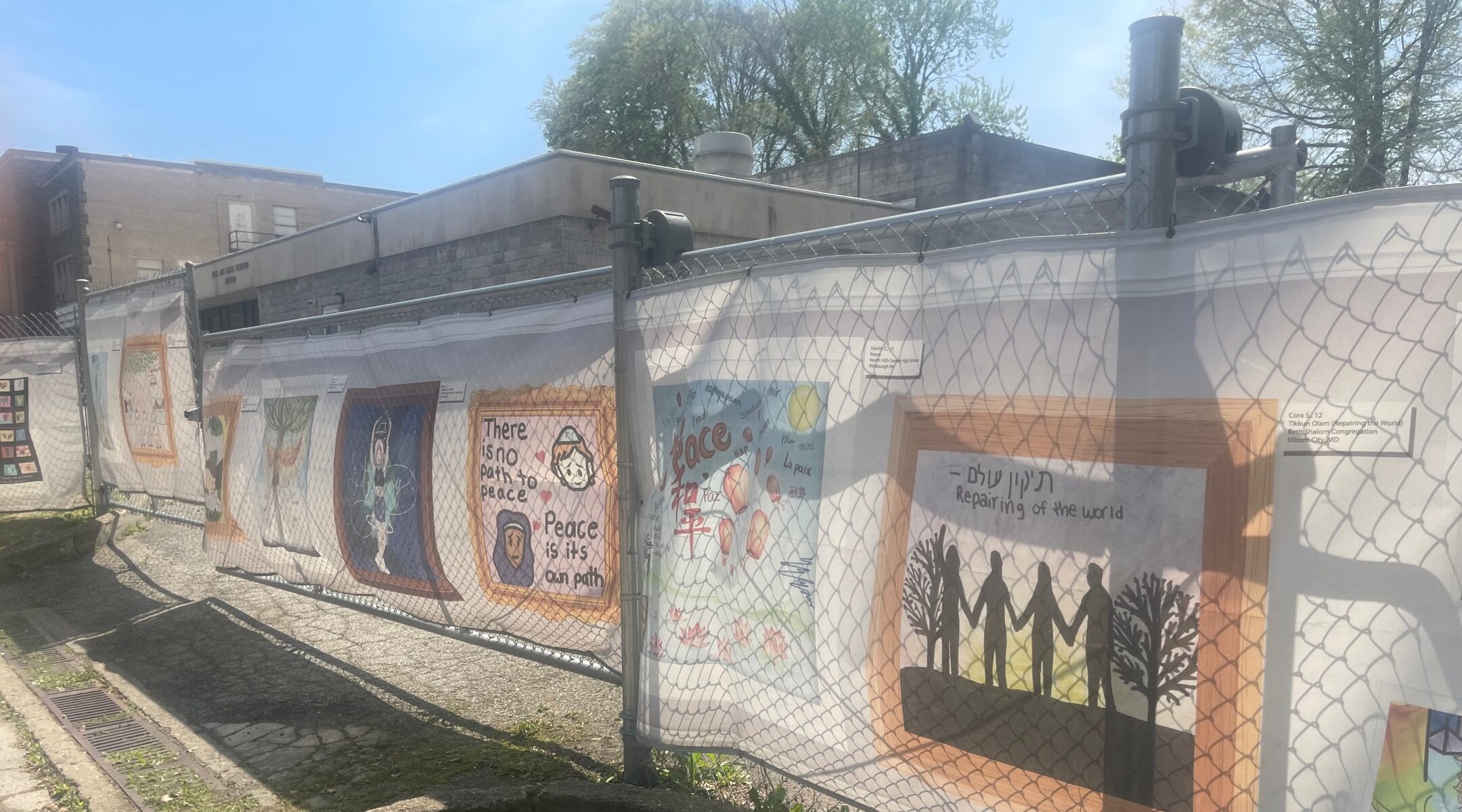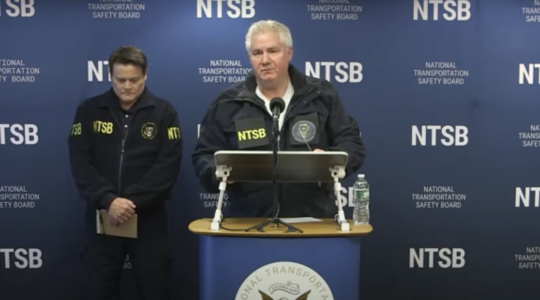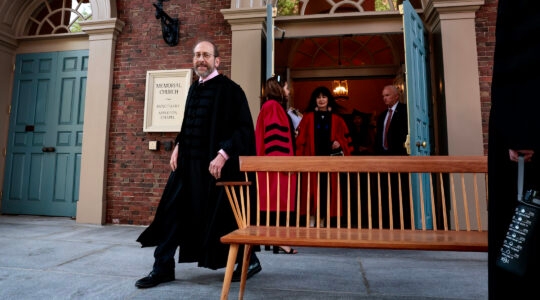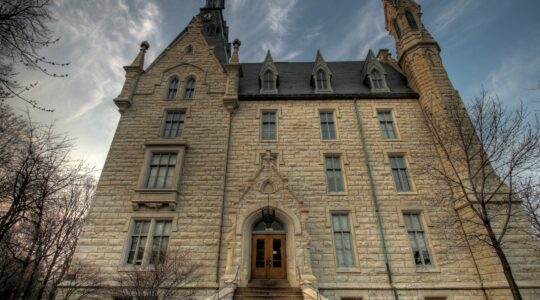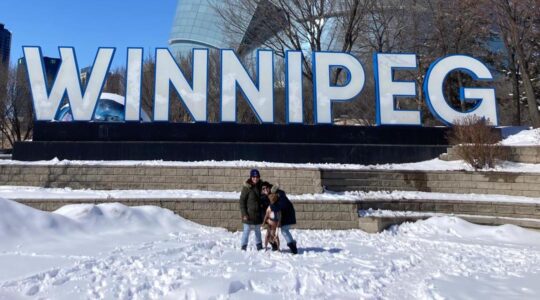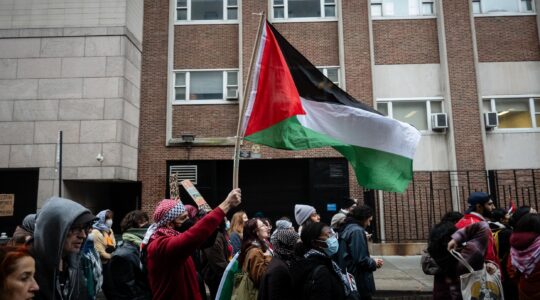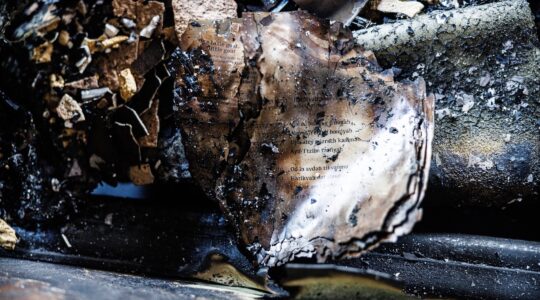PITTSBURGH (JTA) — On Friday afternoon, Squirrel Hill was suffused with spring breezes and pink dogwoods, and alive with the movement that typifies the coming of Shabbat.
Toddlers scrambled up the jungle gym in the JCC playground, while the chatter in cafes was about a looming storm that could soak the walk to synagogue on Saturday. Murray Avenue Kosher was emptying out of challahs.
Barely present, at least on the surface, was any indication that Monday morning would hold a turning point in the community’s greatest trauma. That’s when jury selection was to begin in the trial of the man accused of shattering Shabbat on Oct. 27, 2018, with gunfire. His massacre of 11 worshipers, in a synagogue building a 10-minute stroll from the downtown of this leafy, heavily Jewish neighborhood, was the deadliest-ever attack on U.S. Jews.
But behind the scenes, there are clear signs that the trial’s proximity is being felt. Maggie Feinstein, the director of the 10/27 Healing Partnership, which provides post-traumatic therapy for the community, said that as the trial nears, requests for treatment have spiked.
“The trauma cues that for a while bothered us right after the shooting — for some people it might be ambulances, for other people it might be media, for some people it might be the sound of multiple police cars — you get to a place where they don’t bother you as much,” she said. “But the increased media attention and the increased awareness of this upcoming trial for a number of people is bringing back for them that maybe they didn’t do their own healing the first time around.”
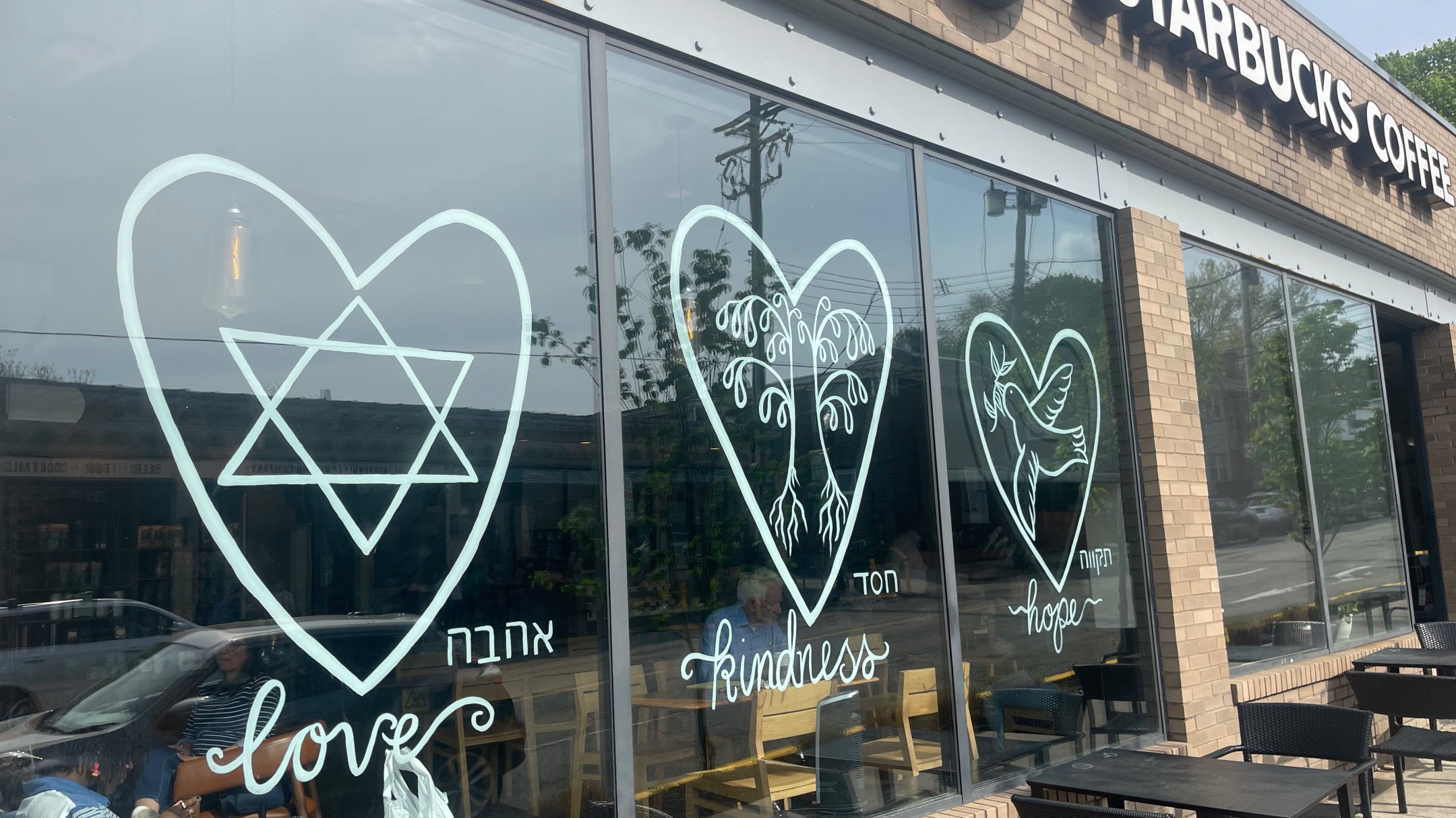
A Starbucks in the Squirrel Hill neighborhood of Pittsburgh is decorated with a memorial for the victims of the 2018 massacre at the city’s Tree of Life synagogue, April 21, 2023. (Ron Kampeas)
There were three congregations in the building: Tree of Life and New Light, both affiliated with the Conservative movement, and Dor Hadash, which is Reconstructionist.
The 11 victims were brothers Cecil and David Rosenthal, couple Bernice and Sylvan Simon, Rose Malinger, Joyce Fienberg, Richard Gottfried, Jerry Rabinowitz, Daniel Stein, Melvin Wax and Irving Younger. Seven were from Tree of Life, three were from New Light and one was from Dor Hadash.
For their families, their friends, their congregations and their broader Jewish community, the legacy of the massacre is a deep-seated longing for control, a longing to never have to think again of the gunman and of the anguish he left in his wake, while grappling with tender memories of the dead, of the decades spent in celebration and in prayer in the building.
Who narrates this story, the gunman or his victims? That struggle now looms as the alleged gunman goes to trial. The community is wrestling with questions such as where and whether to put the bullet-riddled artifacts, whether to worship at the site, whether to even speak of the massacre and how and whether the gunman lives or dies.
”We believe strongly that this antisemitic attack should not stop people from practicing and being Jewish,” Feinstein said. “For a lot of people, that’s an active choice that they have to work at. It doesn’t come easily after feeling unsafe in that environment to then work to find safety in it. But a lot of people have chosen to do that.”
On Friday, Feinstein was organizing support services for families who would, if they so choose, be sequestered in a separate room in the court where they could view the trial. (Family members may also ask to be seated in the courtroom.) She assigned six therapists to be present with the families.
Compounding the revisited trauma of the event, the families are divided over whether the gunman, should he be convicted, deserves the death penalty. The accused has a lawyer, Judy Clarke, known as “the attorney for the damned” for her determination to keep her clients from execution.
What’s clear is that the Jews of Squirrel Hill are taking the trial on with their characteristic spirit of collaboration. The community has hired public relations specialists to handle media inquiries ahead of the trial, in part to safeguard locals from being pressed to answer questions that could harm them or shatter the sense of unity. Congregants reached by the Jewish Telegraphic Agency dutifully deferred to the list of approved contacts on a list distributed by a PR agency.
On Friday afternoon, signs of unity that flooded the city in the immediate aftermath of the shooting were still visible. In a tobacconist’s window a sign with the slogan “No place for hate/Stronger than hate,” which had proliferated throughout the neighborhood after the attack, remained propped up next to a flag and an ad for the lottery. A Starbucks had on its window white paint drawings depicting “love,” “kindness” and “hope” in English and in Hebrew, alongside symbols: the Star of David, a heart and a dove.
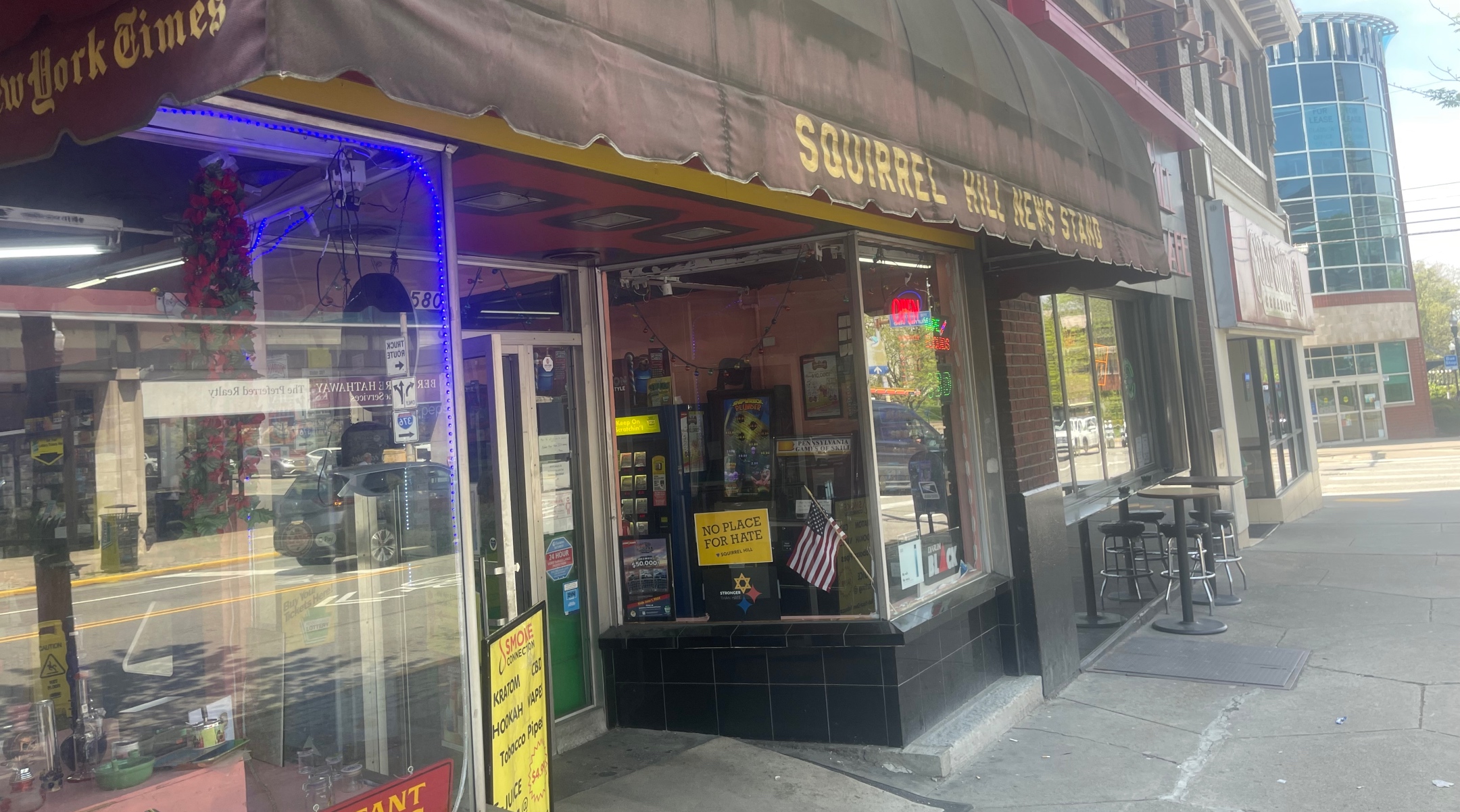
A tobacconist window includes a poster of the “No Place for Hate” slogan that proliferated after the Tree of Life Massacre in 2018, in Pittsburgh, April 21, 2023. (Ron Kampeas)
Representatives of the community talk about “doing Jewish” as a means of coping, including redoubling the very activities — allying with the city’s Black minority and advocating for immigration, refugees and gun control — that fueled the rage of the alleged attacker.
The attacker allegedly was driven in part by the partnership between Dor Hadash and HIAS, the Jewish refugee aid group, and the congregation’s sponsorship of refugee families.
“We have, if anything, doubled down on our commitment to immigrants and refugees,” said Dana Kellerman, the chair of the communications committee at Dor Hadash. “We are currently coming up on the end of our first year working with a new resettlement program to resettle a Congolese immigrant family in Pittsburgh, and we have every intention of when the year commitment is up of working with a second family.”
Kellerman said the shooting had “honestly become part of the background of our existence at this point.” In keeping with her congregation’s rules aimed at protecting their community, Kellerman declined to talk about the day of the massacre, the death penalty or about details of the trial. But she was open about the ways in which her congregation has leaned into the values it has long held, and that the gunman so reviled.
“We have become louder and more public about practicing our Judaism,” she said. Now, she said, the congregation incorporates advocacy for refugees into its service, with liturgical readings on immigration.
There are other changes. “We even have hats now! We have baseball caps!” Kellerman said with a smile, unearthing a photo of herself in a white cap with “Dor Hadash” and a stylized Magen David in blue, standing alongside gun control advocates.
“Previously we all would have shown up as our individual selves, and now we show up in our Dor Hadash baseball caps,” she said. “Mine kept blowing off.”
Steve Cohen, the co-president of New Light, said the congregation’s relationship with Black churches in the city has reached new intensity since the massacre. The congregation’s rabbi and congregants who know Hebrew partner with the churches to analyze sacred texts in the original.
“We would bring our Tanachs [Hebrew Bibles], and the Christian congregation would bring their Bible and then we would talk about the Proverbs and go through it, not just what the intention of the author was, but how different ways the same words can be translated in order to imply different things,” he said. “And so we went through the whole Book of Proverbs with the Rodman Street Baptist Church, and this past winter, we did the selected Psalms with the faith and Destiny Church on the north side.”
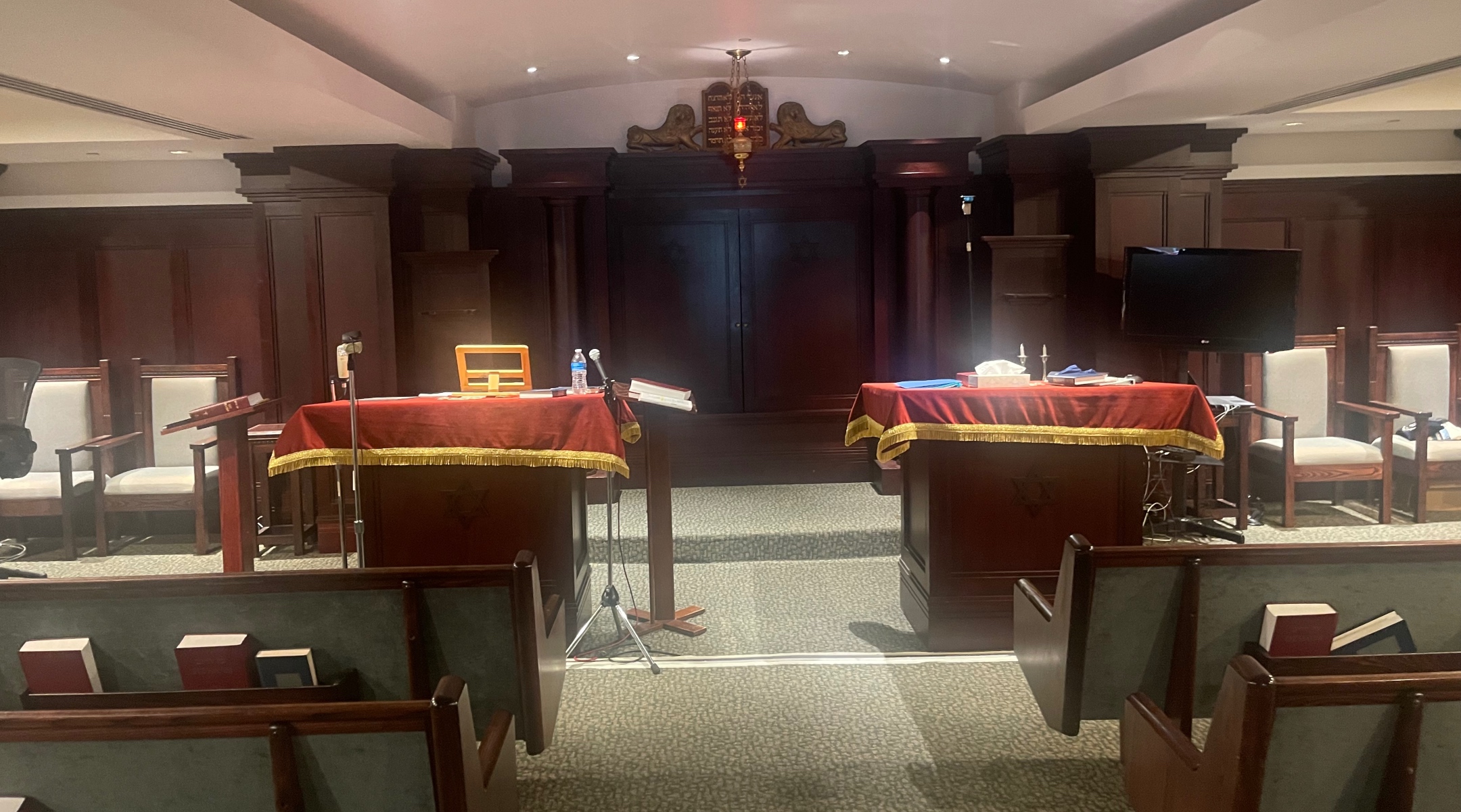
The interior of the new sanctuary of the New Light congregation, four and half years after a gunman massacred three of its congregants, in Pittsburgh, April 21, 2023. (Ron Kampeas)
New Light took its cue from survivors of the 2015 attack on the Emanuel Church in Charleston, South Carolina, in which a white supremacist murdered nine Black worshipers, Cohen said. Leaders of New Light traveled to the church and heard from its elders that it was not enough to tend to the traumatized individuals, but to the community; they emphasized outreach, bringing congregants back in.
“That’s a lot of the reason why we have an outpouring of members who never attended shul now attending shul,” he said.
Feinstein, too, said she had an intensification of religious and ritual observance among her clients: more frequent attendance at Shabbat services, forming a daily minyan, finding a study partner for daily Talmud study.
Kellerman said the community has become closer; she sees it in congregants who linger. “It shows up in things like people showing up for Friday night services, and hanging out to chat or getting on a little early to chat,” she said.
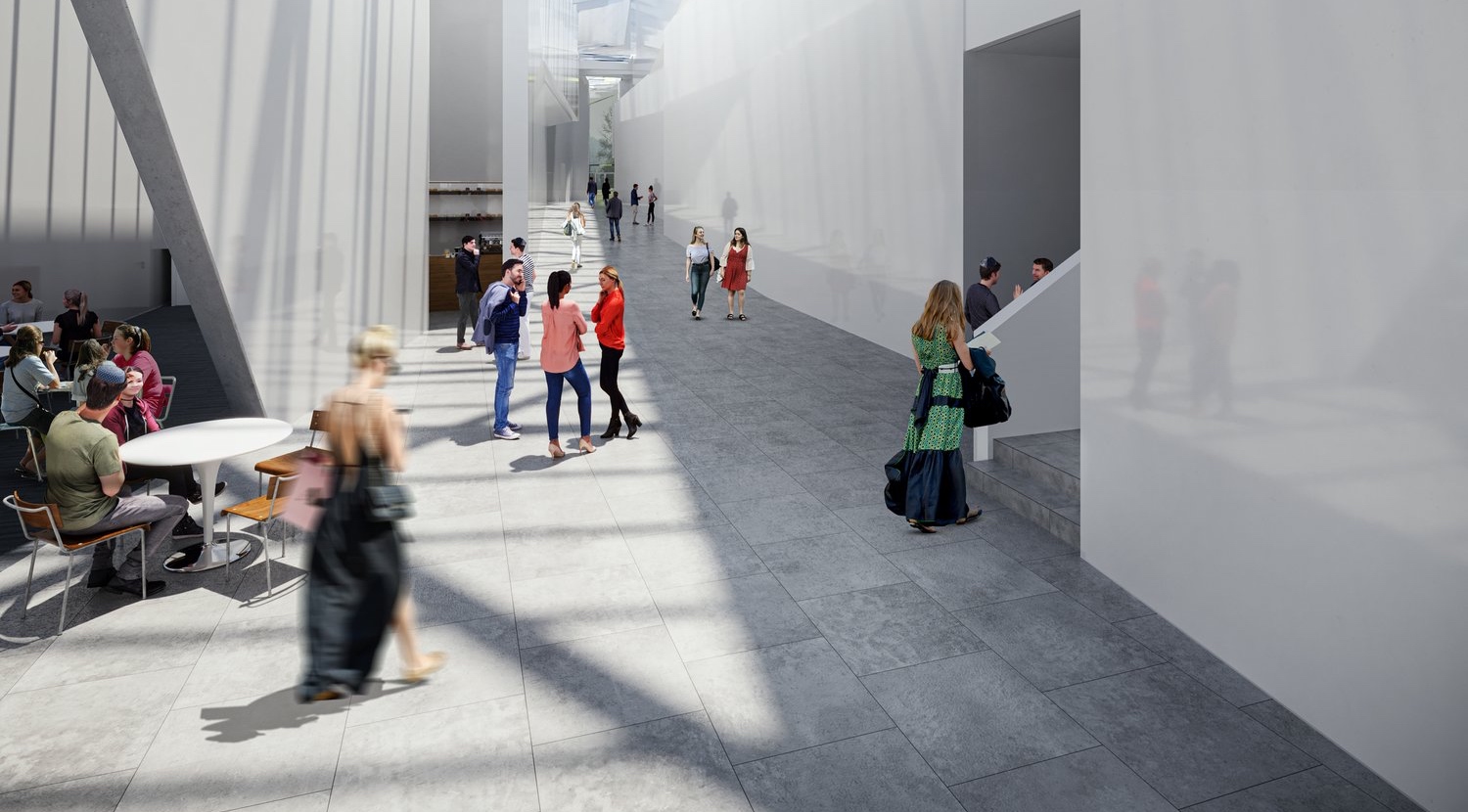
A rendition of architect Daniel Libeskind’s plans for the interior of the new Tree of Life synagogue. (Tree of Life)
In the days leading up to the trial, the community bid farewell to the most salient relic of that painful day: the hulking synagogue building on the corner of Wilkins and Shady that has stood empty since then. All three congregations have decamped to nearby synagogues, leaving behind the chain-link fence draped with paintings from children across the country wishing for strength.
“Nobody has been meeting in the synagogue since the day of the shooting,” said Carole Zawatsky, the Tree of Life CEO who is overseeing the plans to replace the building. The only people to have been inside at all, she said, were survivors and “special friends” — donors to the rebuilding and politicians.
Zawatsky said it is wrenching to even contemplate returning for some. “You can walk through the building and see where the gunman was destructive,” she said. “You can see where the gunman was apprehended, where the gunman opened fire. It’s devastating to witness.”
But some intend to: Tree of Life lost seven congregants but plans on returning once the building is rebuilt as a museum and education center focused on the dangers of extremism.
On Sunday, the Tree of Life congregation had an outdoor ceremony to say “L’hitraot,” Hebrew for “until we meet again,” to the building as it has existed up to now.
“We are grateful to God for the thousands of blessings that have passed through these doors,” Rabbi Jeffrey Myers, the rabbi who sheltered congregants and alerted police, said at the ceremony. “We cannot, we must not, permit one day … to define us, nor outweigh all the good.”
The new center is being designed by Daniel Libeskind, the architect who designed the master plan for the World Trade Center site reconstruction in New York and the Jewish Museum in Berlin.
But Dor Hadash and New Light decided their moves were permanent in part because families of their victims swore never to return to the building.
New Light is now ensconced in what once was a secondary chapel at the Beth Shalom synagogue, as if it has been there for decades: Plaques honoring past donors and presidents adorn the walls of the sanctuary. The only signs of the massacre are the 1,000 paper cranes Pittsburgh’s Japanese community gave the congregation, reflecting a Japanese tradition that folding cranes will make a wish come true. They hang at the entrance to the sanctuary, unexplained by any plaque. There is a stained glass monument to the three victims at the cemetery where they are buried.
Even with Tree of Life’s commitment to return, many questions remain about what that will look like. The congregation has yet to decide what objects will stay in the sanctuary, what will stay in storage and what will be part of a separate exhibit, Zawatsky said.
“The first work that’s had to be done for the synagogue is ‘What are the things that need to be saved and go into storage during construction?’” she said.
In some ways, she indicated, the work of rebuilding could bear some resemblance to the balancing act that the community will have to navigate during the alleged shooter’s trial.
“We are thinking deeply about how you exhibit some of these materials,” Zawatsky said, “in ways that are both teachable moments and don’t retraumatize.”
JTA and the Pittsburgh Jewish Chronicle will be covering the full Pittsburgh synagogue shooting trial. Can you help us raise $10,000 to support our coverage of this trial and power the future of Jewish journalism?
JTA has documented Jewish history in real-time for over a century. Keep our journalism strong by joining us in supporting independent, award-winning reporting.
